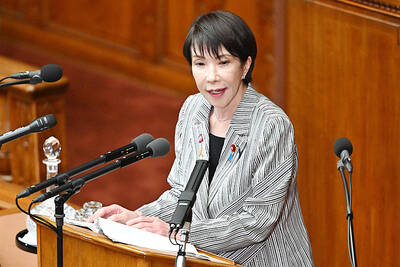China’s People’s Liberation Army Air Force could be on the brink of purchasing 48 Sukhoi 35 (Su-35) multirole air superiority fighters, in what has been described as one of the largest arms deals between the two countries in recent years.
A Russian Federation Ministry of Defence source told the Russian-language Kommersant business newspaper recently that the request for the Su-35s, made last year, was valued at more than US$4 billion, or about US$85 million per aircraft.
The two sides have “practically agreed” to the deal, the source said.
The Su-35 is a 4-plus-plus-generation multirole air superiority fighter that is just now entering service in the Russian Air Force, which has also ordered 48 in a deal that runs through 2015.
In addition to having some stealth and supercruise characteristics, the Su-35 is expected to be equipped with advanced passive electronically scanned array (PESA) radar systems.
The acquisition could further tip the balance of air power in the Taiwan Strait in China’s favor, as Taiwan remains unsuccessful in its requests to obtain 66 F-16C/Ds from the US, an aircraft that is almost a full generation behind the Su-35 (China’s J-20 and the US’ F-22 and F-35 are so-called fifth-generation aircraft).
However, fears of technological theft could add complexity to the Su-35 deal.
According to Jane’s Defence Weekly, Moscow has demanded guarantees that key technologies included in the aircraft — such as the PESA radar and engines — will not be reverse-engineered by China for export.
One official said Russia would only allow the deal to proceed if China purchased a minimum of 24 aircraft.
Last year, China canceled an order for 95 Su-27s for local assembly after Shenyang Aircraft Corp (瀋陽飛機) launched serial production of the J-11 fighter, which experts regard as a near copycat of the Su-27.
Meanwhile, China also reportedly requested an unspecified number of Almaz-Antei S-400 long-range air defense systems from Moscow in November 2010, hoping those could be delivered by 2015. However, Jane’s reported that production problems could make delivery impossible before 2017.
China already has more than a dozen Russian-made S-300PMU2 “Favorit” air defense systems in operation, which have a range of about 200km. About eight battalions, recently deployed in Fujian Province, could shoot down aircraft within some sectors of Taiwanese airspace. The S-400 has a range of approximately 400km, or about twice that of the US-made Patriot Advanced Capability 3 (PAC-3) system deployed by Taiwan.

The Central Weather Administration (CWA) yesterday said it expected to issue a sea warning for Typhoon Fung-Wong tomorrow, which it said would possibly make landfall near central Taiwan. As of 2am yesterday, Fung-Wong was about 1,760km southeast of Oluanpi (鵝鑾鼻), Taiwan’s southernmost point, moving west-northwest at 26kph. It is forecast to reach Luzon in the northern Philippines by tomorrow, the CWA said. After entering the South China Sea, Typhoon Fung-Wong is likely to turn northward toward Taiwan, CWA forecaster Chang Chun-yao (張峻堯) said, adding that it would likely make landfall near central Taiwan. The CWA expects to issue a land

Taiwan’s exports soared to an all-time high of US$61.8 billion last month, surging 49.7 percent from a year earlier, as the global frenzy for artificial intelligence (AI) applications and new consumer electronics powered shipments of high-tech goods, the Ministry of Finance said yesterday. It was the first time exports had exceeded the US$60 billion mark, fueled by the global boom in AI development that has significantly boosted Taiwanese companies across the international supply chain, Department of Statistics Director-General Beatrice Tsai (蔡美娜) told a media briefing. “There is a consensus among major AI players that the upcycle is still in its early stage,”

The Central Weather Administration (CWA) yesterday said it is expected to issue a sea warning for Typhoon Fung-wong this afternoon and a land warning tomorrow. As of 1pm, the storm was about 1,070km southeast of Oluanpi (鵝鑾鼻), Taiwan’s southernmost point, and was moving west-northwest at 28 to 32kph, according to CWA data. The storm had a radius of 250km, with maximum sustained winds of 173kph and gusts reaching 209kph, the CWA added. The storm is forecast to pass near Luzon in the Philippines before entering the South China Sea and potentially turning northward toward Taiwan, the CWA said. CWA forecaster Chang Chun-yao (張峻堯) said

Japanese Prime Minister Sanae Takaichi yesterday said that China using armed force against Taiwan could constitute a "survival-threatening situation" for Japan, allowing the country to mobilize the Japanese armed forces under its security laws. Takaichi made the remarks during a parliamentary session while responding to a question about whether a "Taiwan contingency" involving a Chinese naval blockade would qualify as a "survival-threatening situation" for Japan, according to a report by Japan’s Asahi Shimbun. "If warships are used and other armed actions are involved, I believe this could constitute a survival-threatening situation," Takaichi was quoted as saying in the report. Under Japan’s security legislation,